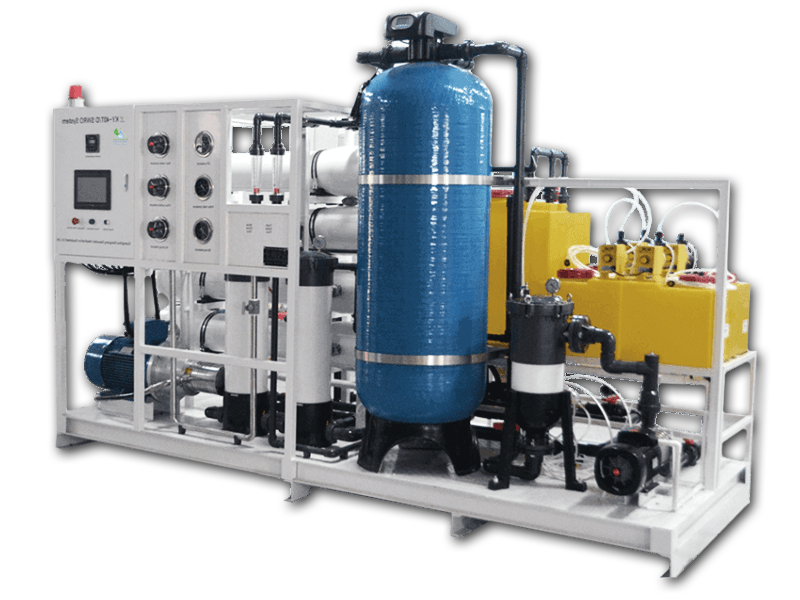Introduction
Reverse Osmosis (RO) technology has revolutionized water purification by offering efficient solutions for both residential and commercial applications. Among the various capacities available, the 1000 GPD (gallons per day) RO membrane stands out as a powerful option for those requiring high-volume water purification. This article delves into the specifics of 1000 GPD RO membranes, exploring their working principles, applications, benefits, and maintenance.
What is Reverse Osmosis?
Reverse Osmosis is a water purification process that removes contaminants from water by using pressure to force water molecules through a semipermeable membrane. The membrane acts as a barrier to larger molecules and impurities, allowing only clean water to pass through. The process effectively removes a wide range of contaminants, including dissolved salts, bacteria, and other impurities, making it an essential technology in water treatment.
The 1000 GPD RO Membrane: An Overview
A 1000 GPD RO membrane is designed to purify up to 1000 gallons of water per day. This capacity makes it suitable for larger households, small businesses, and certain industrial applications. The membrane is the core component of the RO system, where the actual filtration takes place.
Key Components of a 1000 GPD RO System
- Pre-Filters: These are used to remove larger particles, such as sediments and chlorine, which can damage the RO membrane.
- RO Membrane: The heart of the system, it removes up to 99% of contaminants, including dissolved salts, bacteria, and heavy metals.
- Post-Filters: These are used to polish the water, removing any residual tastes or odors.
- Storage Tank: This tank stores the purified water, ensuring a steady supply even when demand spikes.
- Flow Restrictor: Ensures the correct amount of pressure is maintained across the RO membrane.
How Does a 1000 GPD RO Membrane Work?
The operation of a 1000 GPD RO system involves several stages:
- Pre-Filtration: Water first passes through pre-filters that remove larger contaminants. This step protects the RO membrane from clogging and damage.
- Pressurization: The pre-filtered water is then pressurized to push it through the RO membrane.
- Membrane Filtration: As water flows through the semipermeable RO membrane, contaminants are trapped and separated from the clean water.
- Post-Filtration: The purified water passes through post-filters to enhance its taste and odor before being stored in the tank.
Applications of 1000 GPD RO Membranes
The 1000 GPD RO membranes find applications in various sectors:
- Residential Use: Ideal for large households that require a high volume of purified water daily.
- Commercial Use: Suitable for small businesses, such as restaurants, cafes, and small offices, where clean water is essential for operations.
- Industrial Use: Used in light industrial processes where purified water is needed, such as in laboratories and manufacturing processes.
- Agriculture: Helps in providing clean water for irrigation, ensuring healthier crop yields.
Benefits of Using a 1000 GPD RO Membrane
- High Capacity: Can meet the demands of larger households and small commercial setups efficiently.
- Cost-Effective: Though the initial investment might be higher, the long-term savings from reduced water purchase and lower maintenance costs make it economical.
- Improved Water Quality: Removes up to 99% of contaminants, ensuring safe and clean water for drinking and other uses.
- Environmental Benefits: Reduces the reliance on bottled water, leading to less plastic waste.
- Reliability: Provides a consistent supply of purified water, reducing downtime in commercial and industrial applications.
Maintenance of 1000 GPD RO Systems
To ensure the longevity and efficiency of a 1000 GPD RO system, regular maintenance is crucial:
- Regular Filter Changes: Pre-filters and post-filters should be replaced every 6-12 months to maintain optimal performance.
- Membrane Replacement: Depending on the water quality and usage, the RO membrane should be replaced every 2-3 years.
- Sanitization: The system should be sanitized annually to prevent bacterial growth and contamination.
- Pressure Monitoring: Regularly check the pressure levels to ensure the system is operating within the recommended range.
Challenges and Considerations
While 1000 GPD RO systems offer numerous benefits, there are some challenges and considerations to keep in mind:
- Initial Cost: The upfront cost can be higher compared to smaller systems, but the long-term benefits often justify the investment.
- Waste Water: RO systems produce wastewater as a byproduct. Ensuring proper disposal or recycling of this water is important.
- Water Pressure Requirements: Adequate water pressure is necessary for the system to function efficiently. In areas with low pressure, a booster pump might be required.
Conclusion
The 1000 GPD RO membrane is a powerful and efficient solution for high-volume water purification needs. Its applications span residential, commercial, and industrial sectors, offering reliable and consistent performance. By understanding its working principles, benefits, and maintenance requirements, users can maximize the lifespan and efficiency of their RO systems, ensuring a continuous supply of clean, safe water. Investing in a 1000 GPD RO system is not only a step towards better health but also a contribution to environmental sustainability by reducing plastic waste from bottled water.
